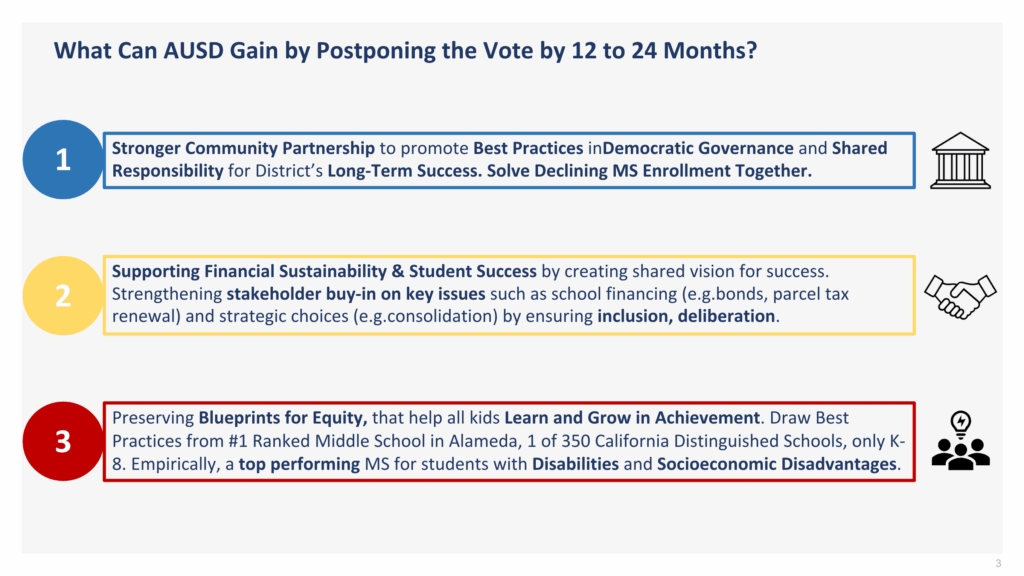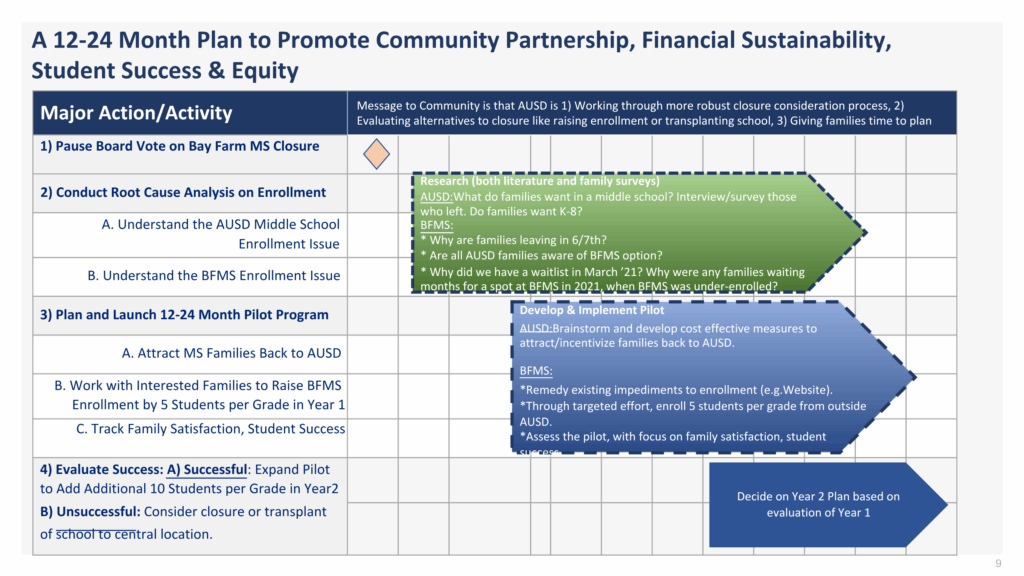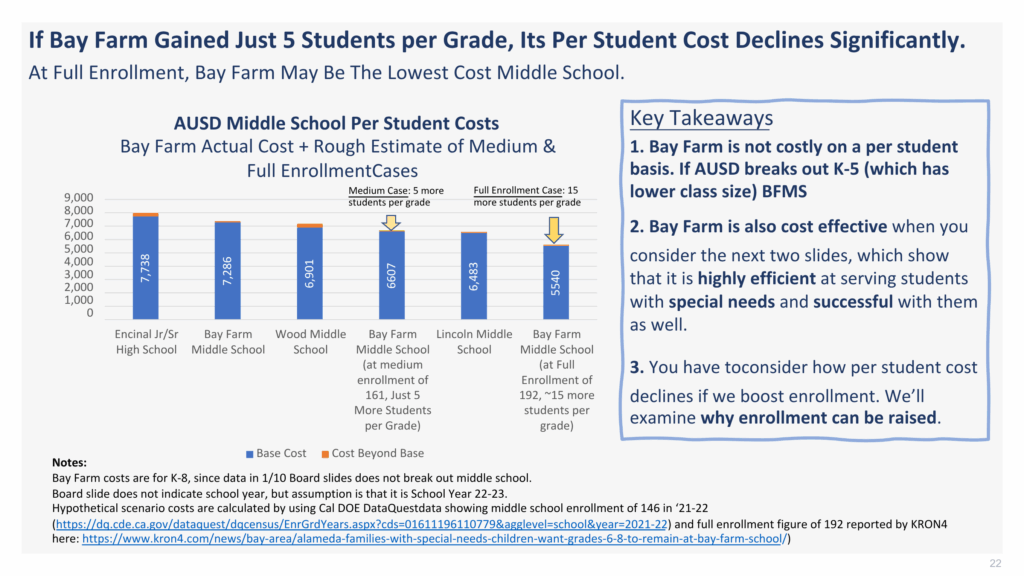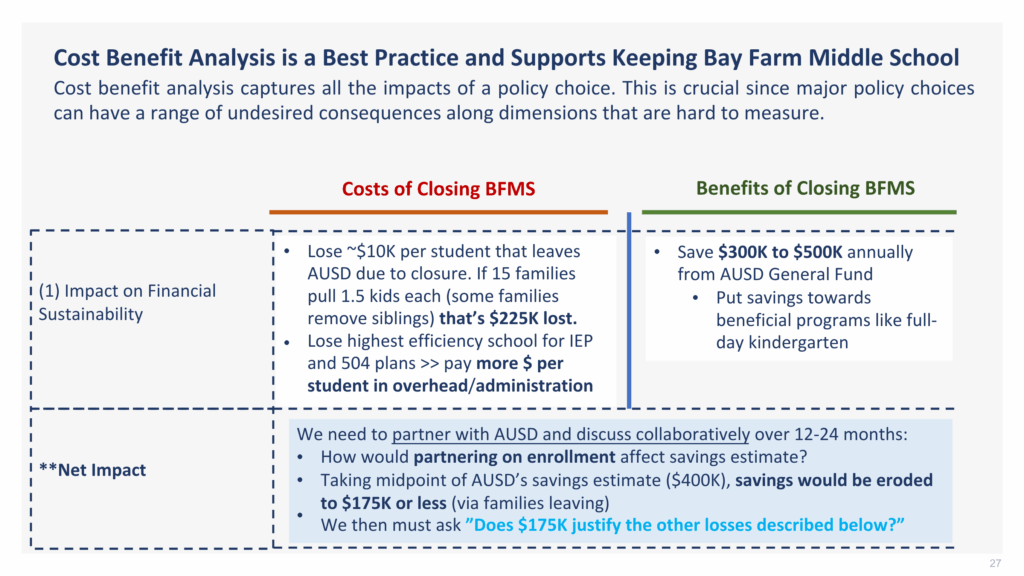
Strategic & Data Consulting for School Districts
Build Your Master Plan for Student Success & Community Impact
Overview


In an era of declining enrollment, tight budgets, and high-stakes scrutiny, school districts need clear-eyed strategy and actionable insight. Master Plan Academy (MPA) offers consulting services that help districts
1. Analyze their biggest challenges, considering factors like fiscal and policy constraints, stakeholder buy-in, and efficient implementation
2. Clarify their vision, strategic options, and potential roadblocks
3. Make decisions rooted in data and equity
From evaluating programs and policies to uncovering trends in achievement and finance, MPA provides trusted, high-leverage support to district leaders. Our services are tailored for both short-term needs and long-term planning, and can be funded through central office budgets, state grants, or local education foundations.
Who We Partner With


-
Superintendents, CFOs, and senior cabinet teams
-
School board members seeking clear, actionable insight
-
PTA and community partners involved in planning efforts
-
State and local education foundations funding research and strategy support
Our Core Services

1. Strategic Planning Facilitation
- Clarify vision, mission, and priorities through collaborative design
- Build strategy maps and logic models for key initiatives
- Facilitate retreats, working groups, and board workshops

2. Policy Research, Decision-Frameworks & Options Analysis
- Provide rapid-turnaround research briefs on key issues
- Model policy tradeoffs and cost/benefit dynamics
- Draw on state, national, and academic benchmarks

3. Data Visualization, Insights & Interactive Dashboards
- Analyze trends in enrollment, test scores, attendance, and outcomes
- Uncover gaps and opportunity areas using disaggregated data
- Generate visualizations and interactive dashboards to facilitate decision-making with user-friendly interfaces for district, school board, and community stakeholders

4. Financial & Operational Analysis, Root Cause Analysis
-
Assess school-level spending, cost per pupil, and efficiency
-
Identify drivers of budgetary imbalance
-
Evaluate facilities use, enrollment patterns, and strategic tradeoffs

5. Stakeholder Communication & Public Engagement
- Develop high-impact presentations and memos
- Support board-meetings and town halls
- Build clarity and trust around complex issues

6. Capacity Building: Data & AI Fluency Professional Development for District Staff
- Provide professional development workshops on data literacy and tools
- Deliver workshops on the ethical and effective use of cutting-edge A.I. tools in central office workflows
- Evaluate current district data collection and usage. Develop modern, strategic data plan
About Master Plan Academy

Master Plan Academy (MPA) is an EdTech & Educational Consulting startup. We were established in 2023 to
1) Provide thought partnership and support to school districts facing a broad array of challenges, but who are committed to maximizing their service to their communities through well-designed strategy, smart data usage, and efficient planning around core values.
2) Guide teens and their families in college admissions/post-high school planning that leverages the power of “Life Design” coaching to build critical life skills and create a post-high school plan that creates values alignment and life-fulfillment.
Why Should Districts Choose Us for Strategy & Data Consulting?

Neil Dandavati is the founder and CEO of Master Plan Academy. MPA’s district engagements are personally led by Neil, which allows us to keep our costs far lower than typical management consulting and educational consulting firms.
About Neil and MPA’s work:
- Former Michael Dukakis Governor’s Fellow and executive team advisor to the Governor of Massachusetts, Deval Patrick
- Experience leading strategic annual goal-setting for Kaiser Permanente’s Northern California hospitals. Developed KPI dashboards for executives to track goal performance and make strategic decisions aligned with targets. Analyzed massive healthcare datasets, conducted statistical analysis, and advised the senior leadership of Medicare on refining complex measures of physician performance
- Background in economic consulting at Cornerstone Research, one of the nation’s top economic and financial consulting firms. Developed complex financial models and statistical analysis that supported the testimony of expert witnesses in high-stakes commercial litigation
- Symantec Award for Innovation in Education: Developed new college/career/tech curriculum for 9th graders. Partnered with Pearson Education to develop a district-wide curriculum for San Francisco, serving 2000+ students.
- Trusted for strategic advice and data consulting by both corporate executive leaders and community organizations
During a major school closure debate, calmed tensions with disaffected parents, developed a robust policy analysis in partnership with a range of local stakeholders, was interviewed by local media, and presented to the Superintendent and CFO. Learn more in the Case Study below.
- UC Berkeley: B.A. in Economics and Political Science
- Harvard University: Master in Public Policy
Case Study: Analysis of School Closure Debate in AUSD (Alameda Unified)
Context: Declining Enrollment in Large Districts
In recent years, large school districts in California have been facing declining enrollment due to a variety of factors. As schools are funded on a per pupil basis, this trend poses an existential threat. In 2023, Alameda’s public school district, AUSD, and its school board revisited the option of school closures as an option to address this challenge. By centralizing students and staff, they reasoned, rather fairly, that they would be able to reduce annual operating expenses and also realize scale economies, since aging schools require substantial ongoing infrastructure upgrades. They announced in spring 2023 that they would vote to close down the middle school belonging to Bay Farm school (at the time a K-8 school) in five weeks.
Stakeholder Engagement Challenges & Community Opposition
In the days after the announcement, there was substantial discontent amongst residents of Bay Farm, the Alameda neighborhood surrounding the school for both process and substantive reasons, including the perception of a lack of stakeholder engagement and also the school’s reputation as the top-performing middle school in the district. A town hall held by the district in the following days saw tensions climb, as many disgruntled parents voiced anger at an event with approximately 150 community members. District leaders explained that with Bay Farm’s enrollment declining, its student-teacher ratios had fallen below other schools. This, they explained, was not an equitable use of resources, and closing the middle school would save $300K to $500K annually. In response, many parents expressed outrage at the relative lack of notice of the closure vote and disbelief that the school with the highest academic performance, and the only K-8 in-district option, would soon be shuttered. Parents of 4th and 5th graders were especially upset because many had chosen the school for its distinct small-school feel and the intimate feel and familiarity that a K-8 with fewer than 180 middle schoolers offered over a nearby middle school with closer to 1,000 students. While district leadership had made a genuine effort to explain the reasoning for the move, the evening seemed to pacify few.
How Neil/MPA Stepped in and Added Value
It was in this context that Master Plan Academy’s founder, Neil Dandavati, began to connect with Bay Farm parents and PTA leaders. Neil could see that the district had some compelling points and faced daunting fiscal challenges. At the same time, parents’ discontent arose for multiple reasons, and in his view, the closure decision was a multi-faceted issue. Ultimately, it was clear that the School Board would make this major decision, though with strong input from the Superintendent and CFO. However, the manner in which the decision was made, and the process as it stood, had the potential to alienate many community members and create a rift with the district OR to enhance trust and perhaps even drive a better outcome. Neil saw that there was an opportunity to support the district and promote the best possible outcome, in terms of both decision and process by accomplishing key objectives:
A) Policy Research, Stakeholder Engagement & Decision Framework Support: Many families were more upset by the manner of the school closure vote announcement and the lack of participation in the decision, than the actual decision. Neil saw that
1) Policy/qualitative research into the optimal process for engaging stakeholders would help. But perhaps even more so, that 2) a balanced decision-making framework that evaluated overall costs and benefits and made the decision more comprehensible and persuasive to all involved might also go a long way.
B) Root Cause Analysis: Understanding Bay Farm’s declining enrollment through process mapping/research: Neil understood that the district was doing its best against the daunting challenges faced by public school districts around the country- limited resources, achievement gaps, and a need to move quickly to counter a powerful enrollment trend that jeopardized district finances in the near term. However, if MPA could lend high-leverage analytical support to identify the sources of the enrollment issue and potential solutions, then perhaps the district could both strengthen its finances and score a win with parents at the same time.
C) Options Analysis: Taking into account the district’s goals, values, and constraints, identifying potential alternative options: With an understanding of the district’s and parents’ needs, and with a deep dive into key financial, operational, and achievement data, perhaps an option could be identified that would better suit all parties’ interests.
With these prime directives in mind, Neil set about leading the charge on creating a robust analysis and developing a proposal. He had less than four weeks time to do this, and since MPA was just in its initial conception and he was working full time in city government, he would need to do this on evenings and weekends. Given this, Neil immediately set about building relationships with PTA leaders and active parents and began the initial data gathering and research.
Findings, Insights & Frameworks
While a complete report is not provided here, below are some samples of the consulting analysis and proposal developed. Neil was invited to present to the AUSD Superintendent and CFO, and also the five members of the Alameda School Board.

Policy Research & Stakeholder Analysis
- Policy research revealed that a more optimal state-recommended process exists for a school closure and that benefits of K-8 model may be missed through closure. Stakeholder analysis revealed strong sentiments around inclusive decision-making, Bay Farm’s place as a CA Distinguished School, and anxiety about a sudden need for families to identify another school that fit their students’ needs.

Options Analysis
- Analysis of stakeholder sentiment and initial root cause analysis revealed knowledge gaps that, if addressed could reveal the precise causes of middle school families leaving the district. A proposed pilot included phases to understand the enrollment issue, survey families, and attract just enough back to reduce per student cost (see Financial & Operational Analysis).

Financial & Operational Analysis
- Diving into the financial drivers of the debate, MPA’s report turned attention from student-teacher ratios to the key metrics of per student cost. An in-depth analysis revealed that the school was already slightly below average in per student cost, while also being efficient at serving students with special education and disability-related needs. The analysis also showed that raising enrollment by just 5 students per grade level would substantially reduce per student cost.

Root Cause Analysis
-
The report tackled the core question of why enrollment levels were not adequate. Engaging with stakeholders, MPA identified that issues with the public-facing enrollment system may need addressing. The website was not presenting Bay Farm as an option and this may have contributed to under-enrollment. Additional research suggested that process improvements might avoid the placement of some families on waitlists, which potentially contributed to more under-enrollment as families opted for other schools.

Decision Frameworks & Stakeholder Engagement
- MPA’s report revisited the district’s initial framing of the decision as one that would lead to a mean of $400K in cost savings. Neil drew on a stakeholder survey to estimate the number of families that would leave the district entirely in the even of Bay Farm’s closure, resulting in lost funds that could reduce cost savings by over 50%. The report then introduced additional dimensions of the decision, including the loss of a high-performing school for students with disabilities and socioeconomic disadvantage (especially for math), that actually outperformed other local middle schools. The report also introduced available data on student social and emotional health, also suggesting stronger performance (87% on the key “caring relationships scale” compared to just 62% district wide).
Impact of MPA’s Work
MPA’s analysis, stakeholder engagement and proposal generated value by strengthening the district’s democratic governance over a challenging decision. This was accomplished in a few key ways:
Expanded Consideration of School Key Performance Indicators (KPIs): Initially, the key data points and criteria considered by the Board when opting to vote on school closure were a) declining enrollment and student teacher ratios, and b) a savings projection for closing the school and reallocating staff. These reflected a good starting point. However, to increase the legitimacy of the ultimate decision, whatever it would be, it helped to bring additional data points into the dialogue with stakeholders. MPA’s work introduced a) per pupil cost, b) administrative efficiency in terms of total students with special education plans (IEPs) and disability plans (504 plans) captured by the ratio of these students to administrators, c) academic performance, especially in math, for students with disabilities and socioeconomic disadvantages, and d) measures of social and emotional health including the caring relationships scale.
Introduction of Root Cause Analysis: Initially, declining enrollment was cited as the reason for considering school closure. MPA’s research and analysis made space for asking why enrollment was declining. The report offered up potential contributing factors including 1) a public-facing site that did not show Bay Farm as an option to nearby prospective families, and 2) an enrollment process that included placing some families on waitlists for Bay Farm, potentially leading to some families opting to go elsewhere. Beyond this, MPA’s proposal called for deeper examination of the trend via a survey of families exiting the district.
Robust Decision-Making Framework: The district rightly examined the significant financial impact of a potential closure. MPA’s report presented a complimentary framework that provided additional information: cost benefit analysis. Using this framework, the report first examined the potential lost funds from families who choose to exit the district upon hearing of the closure of a top performing school and the only in-district K-8 option. Leveraging a Bay Farm family survey that yielded 207 responses, the report showed that, using a scale from 1 to 5, that 88% of families ranked having a K-8 option either a 4 or 5 in importance. Based on this data, the report presented a conservative estimate of the number of families that would depart the district and estimated the funds lost. Depending on the district’s willingness to cut staff, this loss of per pupil revenue could actually bring net savings down to just $175K. This savings amount would then need to be balanced against other less easily quantifiable losses resulting from the decision, such as the loss of the only K-8 option, and a model, CA Distinguished School, with top academic performance, including with students with special education need and disabilities.
Stakeholder Engagement: Facing a fiscal crisis driven by declining enrollment, it is understandable that the district and School Board believed it needed to act quickly to streamline operations and achieve cost savings. Given this, stakeholder engagement may have been perceived as lower in priority or feasibility. However, as became clear, it could not be dispensed with. MPA provided support to the district by taking on high-leverage stakeholder engagement, gathering data on stakeholder views and key information on the enrollment issue in just three weeks. By providing this support, MPA expanded the district’s capacity and incorporated stakeholders’ views into a robust dialogue. MPA then presented findings to School Board members, the Superintendent, and CFO, ensuring that all perspectives were considered.
Options Consideration & Outcome: Through its work, MPA was able to present district leadership and the School Board with an alternative plan for a 1-2 year pilot program in which the underlying causes of declining enrollment were assessed and addressed. The report’s analysis showed that with just a modest enrollment increase of five students per grade, significant per pupil cost savings could be achieved. The report also laid out the key steps to achieve this outcome. Initially, the full Board was set to vote in favor of school closure, including the member from the Bay Farm neighborhood. However, MPA’s analysis and proposal swung the final vote of that member in favor of delaying closure and examining options to keep the school open. While this did not change the final decision of the Board, it reflected the strengthening of governance over the process, as the views of families in the neighborhood were reflected. The middle school closure was ultimately chosen, and had in fact been favored by the Board before the school community was aware of it. However, MPA’s work demonstrated that school districts facing major strategic decisions have an ally that can expand their capacity for a robust process and decision.

